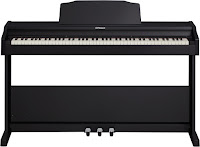 |
🎹 UPDATED REVIEW | Jan 1, 2022 | Roland RP102 Digital Piano | The Roland model RP102 digital piano ($1099 internet discount price) has been out for a few years and is the first Roland furniture cabinet digital piano they have had priced at around $1000. Up until now the lowest priced “traditional” type cabinet piano they have offered is the RP701 which sells for $1729 price, about $700 more than the current internet price of the RP102. But the RP701 is also upgraded over the RP102 and you normally get what you pay for.
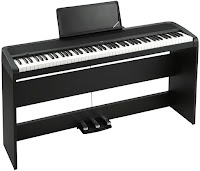 |
| FP30X stand-triple pedal |
The RP102 comes in a nice looking satin black finish only with built-in sliding key cover, 3 full size piano pedals, and a 1/2 size back privacy panel. What most people may not realize is that the RP102 is actually a cabinet version of the current lower priced portable model Roland FP30X digital piano, except that the FP30X has more features, functions, and internal speaker system. The FP30X is priced at $859 internet price by itself but you can add a Roland furniture stand and furniture style (triple) pedalboard that turns the FP30X into more of a regular piano style cabinet with the additional cost of the stand & pedalboard being $260. When you put it altogether the total price of the portable FP30X with stand & pedals is $1119 as compared with the price of $1099 on the RP102. However, you may like the look and design of the RP102 better than the FP30X and this may be the best reason for buying the RP102.
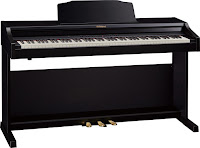 |
As I mentioned earlier, Roland has a more expensive version of the RP102 which is called the RP701 ($1729 internet price) and that model does more things and sounds better and has recently come out. Just to make matters more interesting, the RP102, FP3X, and RP701 share the exact same piano key action, same piano sound chip, pretty much the same pedaling system and a few of the same features. But if you want to keep the cost down under $1000, then the upgraded internal speaker system on the FP30X makes that model sound much bigger and fuller than the new RP102 along with the FP30X pedaling system being able to sense more levels of sustained damper tones with continuous pedaling detection as opposed to the RP102 with its standard half-damper sustain pedaling. So musically speaking the FP30X gives you more bang for your buck, but when you consider the upgraded more traditional piano cabinet (with sliding key cover) of the new RP102 as opposed to the FP30X, then as I said before, you may like this one better.
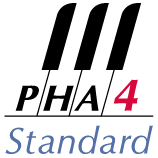

The Roland RP102 is for people who mainly just want to play piano although it does have some extra digital features (bells & whistles) but not nearly as many as the portable FP30X. As far as the Roland piano sound and Roland key action goes, this is what shoppers should focus on the most. In other words…how closely does the piano sound, expressiveness of that sound, and the key action response come to replicating a real piano playing experience? I have detailed my findings of the Roland piano sound and key action in my FP30X review so you can read about that in great detail there. However to sum it up as far as the key action goes, the RP102/FP30X key action is not what I would personally recommend or enjoy playing. This is because the PHA Standard action in this model is heavy (firm) in pressing the keys down as compared to other digital pianos in this price range and it is also somewhat sluggish.
With regard to the piano sound, there are four different acoustic piano sound variations including concert, bright, mellow, and ballad. They have good dynamic range and expressiveness using the Roland SuperNATURAL piano sound technology although the piano sounds overall can be a bit brassy and metallic especially when playing a bit more forcefully with louder keytouch volume. Some people may like the brighter, more metallic piano tone expression on this piano but even the “mellow” piano sound is a bit metallic when playing a bit harder on the keys and this is true of the other previously mentioned models as well. This is just a characteristic of the Roland SuperNATURAL piano sound, and based on all the Roland models I have played around or under $1500, the RP102/FP30X/RP701/F701 just has a brighter, more metallic piano sound than any of the other brands. But as I said for some people that’s fine and they may like it especially pop, and other popular music. Sounds can be a bit subjective but there is no doubt that this piano has somewhat twangy and metallic piano sounds.
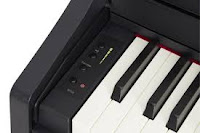 |
| RP102 control panel |
The RP102 is unusual and different from all other Roland pianos because it only has 4 buttons on its small control panel located on the left side of the keyboard which makes the appearance of this model very minimalistic which some people may like. These buttons are for volume up/down, function, and power on/off…that’s it. However, all of the digital features in this piano are accessed by holding down the function button and then pressing a corresponding key on the keyboard to trigger that function which means you need to look in the owners manual to figure out how to access functions and features. The RP102 has 4 piano sounds along with 11 other instrument sounds including harpsichord, strings, choir, electric piano, etc. Other functions include being able to transpose to any key, change the brightness or mellowness of the piano sound, add and adjust reverb ambiance effects, select a digital metronome with a variety of timings and tempo control for rhythm training, changing touch sensitivity control to digitally adjust the keytouch response (5 levels), being able to layer two different instrument sounds together for playing at one time, and finally to adjust the piano so two people can play independently at one time when playing the same song in the same octaves using a feature called “twin piano.” The “twin piano mode” is typically used by 2 students who are practicing the same song at the same time or by teacher/student during practice. However for most people I have found that the “twin piano” feature is generally not that important and is seldom used.
In terms of the piano speaker system and connectivity, the RP102 has 2 built-in speakers going through 12 watts total audio power which is by far the smallest amount of audio power on any Roland digital piano that I know of and makes the piano sound much more artificial and brassy overall. Although 12 watts of power is generally enough volume for a smaller room, the small amount of power tends to make the piano sound somewhat tinny to my ears and not fuller or richer like more powerful digital pianos in the Roland line in the higher price range. The competitive Yamaha YDP-144 digital piano ($1099 internet discount price has only 16 watts total power going into 2 speakers, and even the Casio AP-270 digital piano ($1119 internet discount price) has 16 watts of audio power going through 2 speakers. However, the popular Casio PX-870 digital piano ($1099 internet discount price) has a big 40 watts total power going through a 4 speaker projection system which offers a much richer piano playing experience and that would be my choice for better piano tone. The RP102 also has 2 headphone jacks, a USB output to external devices, and a special update port which would only be used if Roland came out with updated software for this instrument that you could load in with a USB flashdrive.
One of the big things Roland has done to promote this model along with other Roland keyboard product is with their new updated iOS/Android app called Piano Partner 2. The Piano Partner 2 app for iPad, and also in the future for Android tablet, gives the user access to some impressive and fun features such as interactive music educational help, play-along sheet music, interactive rhythm functions including drum patterns & one-man-band accompaniment, piano practice diary, and the ability to select
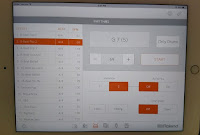
the instrument sounds and metronome in the piano from the iPad making it more intuitive than using the piano itself. Roland has had their Piano Partner app available for their digital pianos for few years already but this version is an upgrade with more features and better accessibility. If you have an iPad or Android tablet then you may enjoy the various features in the Roland Piano Partner app and find them useful and fun. But it does not mean the app will teach you how to play or give you access to your favorite music. That aspect needs to be done through other 3rd party apps or through music educational programs for laptop computers and do recommend those types of apps which can be used with almost any good digital piano these days..
The Roland Piano Partner 2 app also has MIDI wireless connectivity using the MIDI Bluetooth function on your external device. Bluetooth wireless certainly is convenient and handy to use and it eliminates needing USB cable connection which is definitely a nice feature.  The USB/MIDI connection through Bluetooth or through cable controls the MIDI signal and page-turning function but does not offer Bluetooth audio. So there are some limitations to it but the Roland app is very nice if you take advantage of it. However, there are many 3rd party popular music interactive apps for iPad that you can connect to the Roland piano and be involved with some very impressive music education apps, additional music instrument options, music theory curriculum, and so much more both both adults and kids. These app options will work with any USB digital piano so you don’t need the Roland piano to have all of that technology. Be aware that the Bluetooth feature is not for live streaming audio…only MIDI connectivity.
The USB/MIDI connection through Bluetooth or through cable controls the MIDI signal and page-turning function but does not offer Bluetooth audio. So there are some limitations to it but the Roland app is very nice if you take advantage of it. However, there are many 3rd party popular music interactive apps for iPad that you can connect to the Roland piano and be involved with some very impressive music education apps, additional music instrument options, music theory curriculum, and so much more both both adults and kids. These app options will work with any USB digital piano so you don’t need the Roland piano to have all of that technology. Be aware that the Bluetooth feature is not for live streaming audio…only MIDI connectivity.
 |
| RP102 |
Overall the new Roland RP102 digital piano is a nice piano and there are certainly some people who could be happy playing it. But there are digital piano competitors who in my opinion offer more for the money in this price range when it comes to the actual piano playing experience. However these competitors may not have a dedicated iPad app to add features and capabilities to the piano playing experience, so it really just depends on what you want and these are a lot of good digital piano options in and around the $1000 price range. So before you purchase anything from anyone be sure to contact me and I can help you make the right buying decision based on your musical needs, musical desires, and budget. Finally it is good to know that there are a couple better options out there in terms of a more authentic piano playing experience in my opinion and those pianos would be the Casio PX-870 ($1099 internet price) and the Kawai KDP120 ($1199 internet price). Take a look at my reviews on these pianos to learn more about them including the Casio at the link below.
If you want more info on new digital pianos and LOWER PRICES than internet discounts, please email me at tim@azpianowholesale.com or call direct at 602-571-1864.





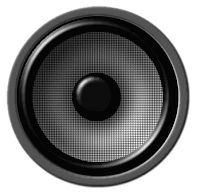
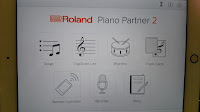










Hi Tim,
where did you find that PHA-IV has 3 sensors per key? Cannot find this information in the Roland's website.
do you have a moment to tell me what you think of the Roland rp 500? I see a used one and am wondering if it would be worth my time. Thank you!